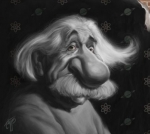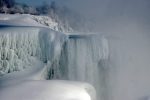.
Re: What is normal range for RERA ???
I may be wrong...but...Since RERAs are not related to AI or HI and do not decrease oxygen, I don't think there is an acceptable range. It's more related to how comfortable you are with snoring.
_________________
| Machine: ResMed AirSense™ 10 AutoSet™ CPAP Machine with HumidAir™ Heated Humidifier |
| Mask: Fisher & Paykel Vitera Full Face Mask with Headgear (S, M, or L Cushion) |
| Additional Comments: Back up is a new AS10. |
Re: What is normal range for RERA ???
While it's true that RERAs (as scored on a full NPSG) do not count as "apneas" or "hypopneas" and are not included in the AHI, they do count as "respiratory related arousals" and are counted in the RDI---the respiratory disturbance index. And the RDI = AHI + (RERA index). My understanding is that a diagnosis of OSA can be made based on RDI (if some apneas/hypopneas are present) and my understanding is that a diagnosis of UARS is based on RDI when there are no apneas/hypopneas present.
But---scoring RERAs in the lab is difficult (and I believe not all labs score them). And part of the criteria for scoring a RERA is the arousal, which is based on data from the EEG. And of course, the PR System One has no way to measure arousals. So, like many other things scored by the PR S1, it is not at all clear how the S1 decides to score a RERA and what exactly an S1 RERA actually is. That's my best guess as to why Encore doesn't list an RDI number anywhere in the reports. Obviously the PR engineers think they have an algorithm that identifies breathing patterns that stand a high probability of being a RERA; but I know of no literature that discusses how the algorithm has been tested for verifying that it correctly identifies RERAs x percent of the time.
From what I can tell with a quick Google search, lab scored RDIs are interpreted the same basic way lab AHI's are: 5 < RDI < 15 indicates mild sleep disordered breathing (which includes both UARS and OSA); 15 < RDI < 30 indicates moderate sleep disordered breathing; and RDI > 30 indicates severe sleep disordered breathing.
But---scoring RERAs in the lab is difficult (and I believe not all labs score them). And part of the criteria for scoring a RERA is the arousal, which is based on data from the EEG. And of course, the PR System One has no way to measure arousals. So, like many other things scored by the PR S1, it is not at all clear how the S1 decides to score a RERA and what exactly an S1 RERA actually is. That's my best guess as to why Encore doesn't list an RDI number anywhere in the reports. Obviously the PR engineers think they have an algorithm that identifies breathing patterns that stand a high probability of being a RERA; but I know of no literature that discusses how the algorithm has been tested for verifying that it correctly identifies RERAs x percent of the time.
From what I can tell with a quick Google search, lab scored RDIs are interpreted the same basic way lab AHI's are: 5 < RDI < 15 indicates mild sleep disordered breathing (which includes both UARS and OSA); 15 < RDI < 30 indicates moderate sleep disordered breathing; and RDI > 30 indicates severe sleep disordered breathing.
_________________
| Machine: DreamStation BiPAP® Auto Machine |
| Mask: Swift™ FX Nasal Pillow CPAP Mask with Headgear |
| Additional Comments: PR System DreamStation and Humidifier. Max IPAP = 9, Min EPAP=4, Rise time setting = 3, minPS = 3, maxPS=5 |









